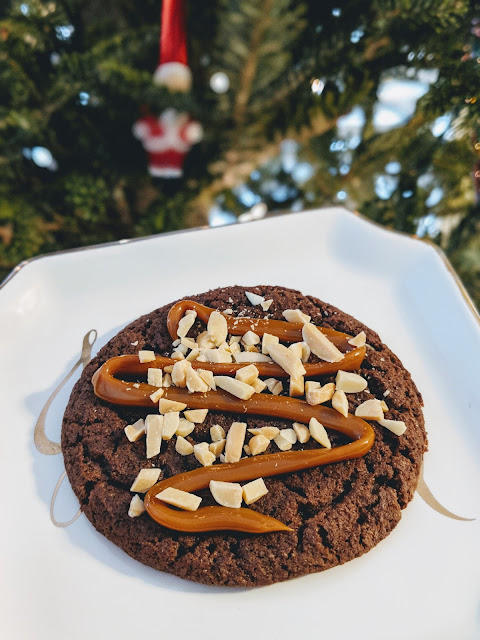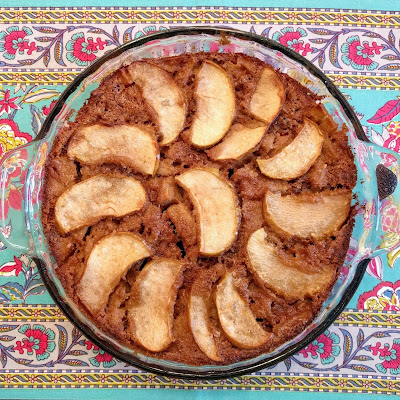I have spent hours pouring over
The Artful Baker, and had my eye on two cakes in particular. But when it came time to bake one today, I realized that I didn't have enough chocolate for one and the carrots disappeared from the fridge that I needed from the other. So I gravitated toward a recipe I have seen others from the ABRAMS Dinner Party making, the double chocolate bundt cake. So while I am not going to win an award for originality, we all need a few go-to recipes that come together quickly and are crowd-pleasers. Well I have your chocolate cake!
What I love about this cookbook is that the author, Cenk Sonmezsoy, details the process he has undertaken for each recipe. For many, this means he explains where he started, what worked, what he changed, how it evolved. For this one, he does not see any improvements on the horizon, it is done, it is the best it can be, etc. He made many chocolate bundt cakes on the way to this one. And we can all benefit from its deliciousness. Not too sweet, good structure, can be dressed up or down. Basically, this is the little black dress of cakes.
CAKE
14 tablespoons (7 oz, 200 grams) unsalted butter, softened, plus more for pan
5 oz (140 grams) bittersweet chocolate (70% cacao), coarsely chopped
1/2 cup (50 grams) Dutch-processed unsweetened cocoa powder
2 tsp (10 grams) pure vanilla extract
1/2 cup (120 grams) very strong brewed coffee or espresso
1/2 cup (120 grams) heavy cream
2 cups (280 grams) all-purpose flour
1 1/2 tsp (6 grams) baking powder
1/2 tsp (3 grams) baking soda
1/2 tsp (4 grams) fine sea salt
1 3/4 cups (350 grams) granulated sugar
4 large eggs, at room temperature
Set a rack in the lower third of the oven and preheat the oven to 325 F (160 C).
Generously butter a 10-cup (2.4 liter) Bundt pan. If your pan has an intricate design, use a pastry brush to reach all the nooks and crannies.
To make the cake, in a medium heatproof bowl, combine the chocolate, cocoa powder, and vanilla.
In a small saucepan over medium-high heat, bring the coffee and cream to a boil, stirring occasionally. Take the pan off the heat, pour the coffee mixture over the chocolate mixture, and whisk until the chocolate melts and the cocoa powder dissolves. Let cool completely.
In a medium bowl, whisk together the flour, baking powder, baking soda, and salt.
In the bowl of a stand mixer fitted with the paddle attachment, beat the butter at medium-high speed until creamy, about 2 minuteness. Add the sugar and beat until light and fluffy, about 3 minutes. Add the eggs, one at a time, and beat for 1 minute after each addition, scraping down the sides of the bowl as needed. Reduce the speed to low and beat in one-third of the flour mixture, followed by half of the chocolate mixture. Repeat with another third of the flour mixture and the remaining chocolate mixture. Finally, add the remaining mixture and beat just until incorporated.
Remove the bowl from the mixer and scrape down the sides of the bowl with a silicone spatula, reaching down to the bottom to incorporate any unmixed dry ingredients. Scrape the batter into the prepared pan and smooth the top.
Bake until a wooden toothpick inserted into the cake comes out clean, 50-55 minutes Set the pan on a wire rack to cool for 10 minutes. Invert the cake onto the rack, set the rack over a baking sheet lined with parchment paper, and let cool completely.
GLAZE
5 ounces (140 grams) bittersweet chocolate (70% cacao), coarsely chopped
3/4 cup (180 grams) heavy cream
2 tbsp (25 grams) granulated sugar
1 tsp (5 grams) pure vanilla extract
To make the glaze, put the chocolate in a medium heatproof bowl.
In a medium saucepan over medium-high heat, bring the cream, sugar, and vanilla to just below a boil, stirring frequently. Take the pan off the heat and pour about half of the hot cream mixture over the chocolate. Stir gently with a silicone spatula until blended. Add the rest of the hot cream mixture, stirring gently until the chocolate melts completely. Immediately pour it over the cake, allowing it to drip down the cake.
Using a cake lifter, transfer the cake onto a serving plate.
The cake will keep under a cake dome at room temperature for up to 3 days.
This post is sponsored by ABRAMS Books, as part of the ABRAMS Dinner Party. All experiences and opinions are my own!






































